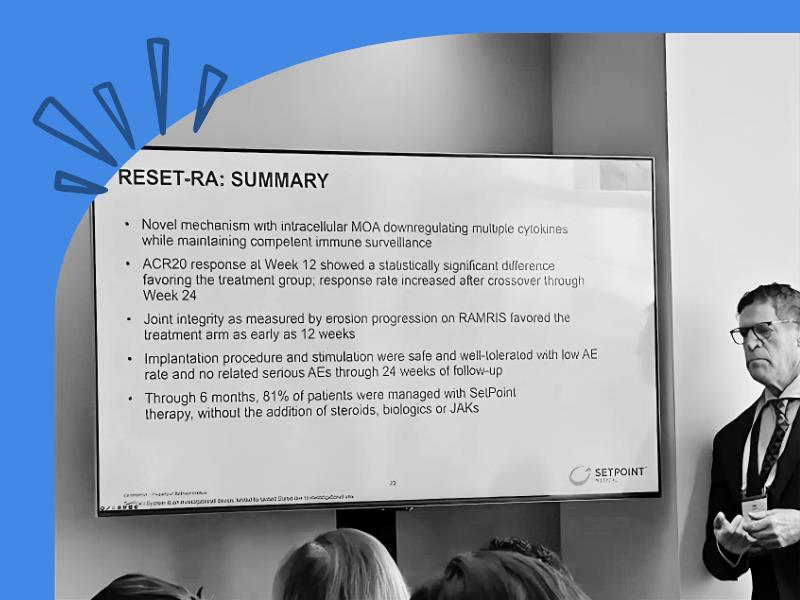What is Psoriatic Arthritis?
Psoriatic arthritis is arthritis, or inflammation of the joints, that usually happens along with cutaneous psoriasis, or skin and nail inflammation.
Psoriatic arthritis is a type of inflammatory disease. That means your body’s immune system mistakenly sets off inflammation that rages uncontrolled, and attacks your own tissues. Usually, our immune systems use inflammation to fight off disease or heal an injury, then shuts it off. In psoriatic arthritis, it doesn’t shut off.
In psoriatic arthritis, that inflammation keeps attacking healthy skin, nail, or joint tissues, and causes damage and pain. Psoriatic arthritis is also one type of inflammatory arthritis. That means it involves inflammation that often attacks the joints, causing swelling, stiffness, redness, and pain. Your organs can also be affected by out-of-control inflammation, including your skin.
PsA is also chronic. This means it is long-lasting. There’s no cure for psoriatic arthritis at this time, and it usually doesn’t go away on its own, meaning you may need to be treated for the rest of your life. But it can feel worse at times and better at others, and treatments can help you get your inflammation under control.
PsA is usually seronegative. That’s a term that describes whether or not you test positive for high amounts of rheumatoid factor (RF) in your blood. RF is an auto antibody directed against your own natural immunoglobulins and is one key sign of inflammation in diseases like rheumatoid arthritis (RA). But people with PsA usually don’t have it. People with PsA also typically test negative for an antibody called anti-cyclic citrullinated peptide, or anti-CCP. About 10-12% of people who have PsA do have lower, positive tests for RF or anti-CCP, though. It’s not a “one size fits all” disease when it comes to lab tests.
About 30% of people with PsA arthritis symptoms may later have psoriasis skin outbreaks too. About 85% of people present with skin symptoms first, while the rest first notice joint problems like pain or swelling. Arthritis symptoms may not show up for five to 10 years after skin outbreaks first appear.
People with PsA may have arthritis that affects their fingers, toes, neck, or spine. They may also have enthesitis, or painful in inflammation at the sites where tendons go into bones at the joints, or tendinitis. Not all people have all symptoms. Remember to report any symptoms to your rheumatologist or dermatologist. Both kids and adults can have PsA, although it usually first appears between age 30 and 50. Both men and women can get it.
PsA is different for each person. Some people have mild disease and only need anti-in ammatory drugs to ease their pain and swelling. Others can have more severe arthritis or all-over fatigue and pain, and need stronger drugs that block in inflammation at its source. Some people with PsA may have more intense arthritis but less psoriasis, while others may have mainly psoriasis without serious joint problems.
Because PsA can affect people in so many different ways, doctors may not always spot your problem right away. Get the right diagnosis as quickly as possible, because your inflammation can do a lot of damage if left untreated. Around half of PsA patients can go on to have irreversible erosive arthritis that destroys their joints, so getting a diagnosis and starting treatment as soon as possible is very important.
What happens if you don’t treat your psoriatic arthritis?
While some people may have fairly mild disease, others can have serious problems all over their body. PsA is a systemic disease. That means inflammation can affect you all over, and strike different joints or organs.
Your heart health could also be at serious risk if you don’t get PsA in inflammation under control. It’s not just your skin and joints that are affected. There is a much higher risk of cardiovascular problems among people with PsA. So get treated, and make sure you get regular check-ups to be aware of any health problems like signs of heart disease.
If you don’t treat your PsA, there’s a chance you could have joint pain and damage. In some people, this could impact your ability to work, do day-to-day tasks around the house, or enjoy physical activities you love. So see your doctor as soon as possible and stick with your treatment plan.
If you have trouble affording your care or treatments, we have tips that may help you here in this guide, and you can also talk to your doctor’s office to find help.
Psoriatic Arthritis Diagnosis & Tests
There’s no one simple test you can take to be sure you have psoriatic arthritis. Your doctor will have to take many pieces of information into account. That’s called a “clinical” diagnosis.
You’ll need a physical exam first so your doctor can check all of your symptoms. Also, tell your doctor about past symptoms, and even if anyone in your family had psoriasis or arthritis too.
Your doctor will first look for signs of psoriasis and arthritis, especially pain and swelling in your joints, spine (such as along your neck or back – this is also called spondylitis), and the enthesis, or the places where your ligaments or tendons go into your bones. You will probably take some blood tests to look for signs of in inflammation, and get X-rays or other imaging scans (such as an MRI) to examine your joints.
These other symptoms are clues that PsA is the culprit:
- You have psoriasis now, used to have psoriasis, or your family has a history of it.
- You have psoriasis now that affects your nails. This may look like tiny pits in the nail surface.
- You have swollen fingers or toes, or had them in the past. They can be so puffy that they look like sausages.
- You take a blood test for rheumatoid factor (RF) that is negative. This is a sign that your problem is PsA, instead of RA, which is more likely to be positive for RF.
- Your x-rays may show any signs of bone damage or changes.
Your X-rays may also show erosions, or damage, to your bones. They may show signs that new bone is forming in certain areas — which could also later cause pain.
Your doctor may also decide to take other kinds of images, such as MRI, ultrasound, or CT scans, to check your bones for damage or changes in form.





